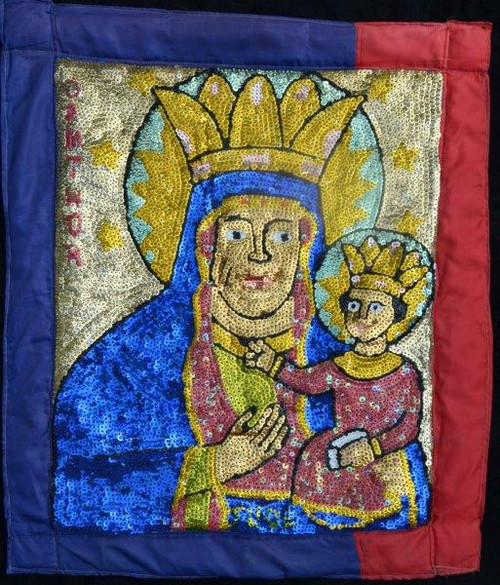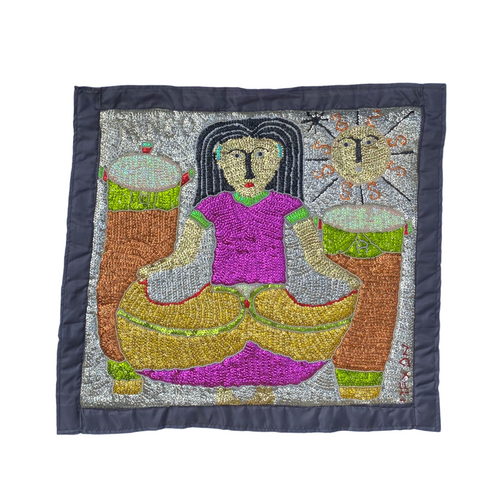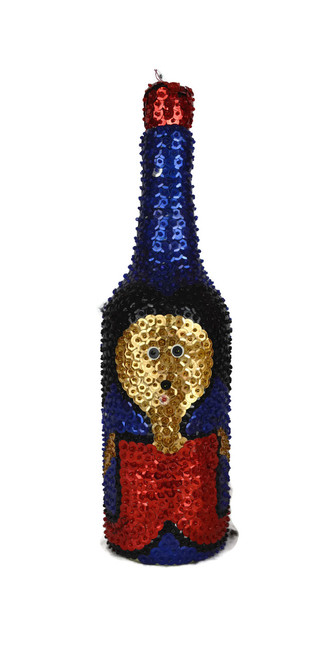Product Description
Handmade Vintage Vodou Drapeau, Sequin La Sirene Voodoo Ceremony Flag, Voodoo Folk Art
Size: 24"x34"
Vodou flags (also called drapos or banners) are traditionally used to decorate the site where a ceremony is held. They are also draped across the backs of ceremony participants so that, as they dance, the shimmer produced by the glittering beads, sequins, and seed pearls will attract a particular lwa or spirit (also spelled loa). Traditionally, the elaborate embroidery of Vodou flags is done by Vodou priests (ougans) or priestesses (mambos). However, as these dazzling wall-hangings made the transition from religious ritual works to a highly prized and collectible artform, many artists — both practicing and non-practicing — have come to create flags for the art market. Flags typically feature the physical representation or vévé (symbol) that represents an individual lwa.
**Although we try our best to photograph in a way that best represents the color, due to the nature of photography, lighting, computer resolution, other factors, colors may vary slightly in person.
Artist Bio

George Valris
Working in turn as a basketmaker, a laborer in a clothing factory, and a stevedore on a cruise ship, George Valris found his niche in 1988 when a friend showed him how to sew sequins on flags. He sold his first Voodoo flag to Galerie Marassa and that taste of success emboldened him to set up his own shop in Port-au-Prince.
Today, George is widely acclaimed as one of the top craftsman of his trade. In particular, he is noted for the painterly quality of his sequin work. Incredibly, the average flag consists of between 18,000 and 20,000 sequins, each applied by hand, and taking about 10 days to complete.
Voodoo flags are traditionally used for display in sanctuaries or in processionals, and are almost always made by Voodoo priests. Though George is a devout Catholic and does not practice Voodoo, he sees no conflict there. Nor would most of his countrymen. According to an article published by the U.S. Library of Congress, “Voodoo is based on a domestic cult of family spirits, and is indeed not entirely separate from Roman Catholicism, Haiti’s official religion.” Rather, the two exist side by side in Haiti, each enhancing and enriching the other.
Some of George’s finest flags are displayed in museums, such as The Fowler at UCLA, and The American Visionary Art Museum in Baltimore. Moreover, he has been invited to participate as a guest artist at the International Folk Art Market in Santa Fe consistently since 2006. Knowledgeable collectors pursue his pieces with the assurance of their lasting beauty and value.












